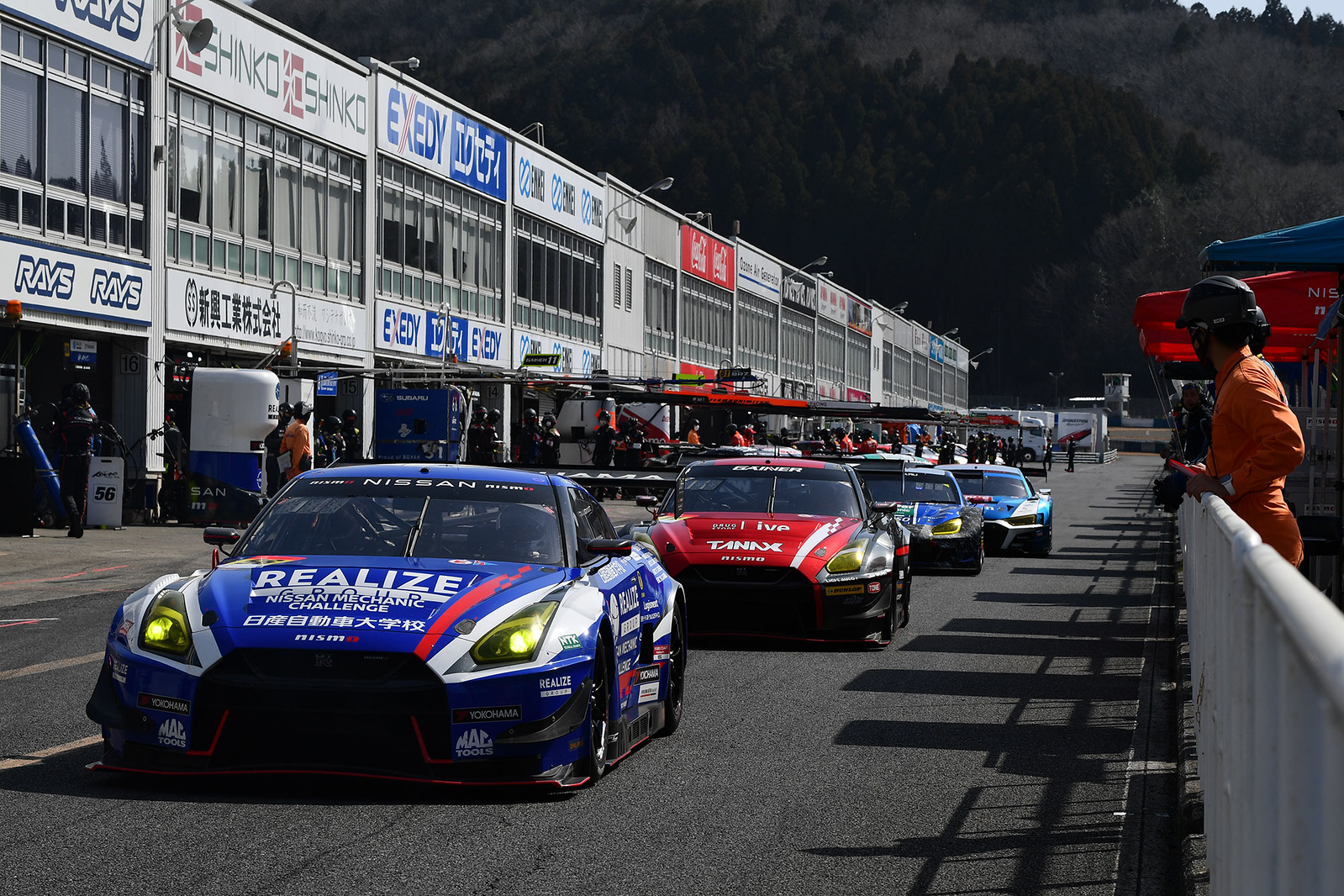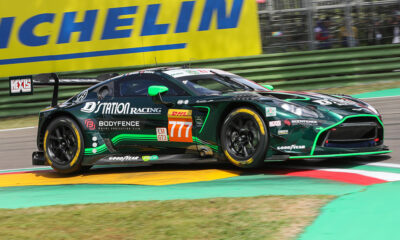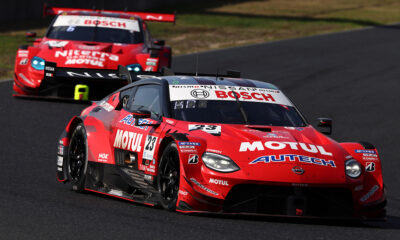
Photo: SUPER GT
SUPER GT has announced the adoption of an aggregate qualifying system for the upcoming season that will see pole position determined by the combined times in both Q1 and Q2.
The Japanese series made the announcement on Friday, presenting it as part of its previously-announced push to cut its carbon emissions by reducing the number of tire sets used by each team during a race weekend.
As part of the overhaul, cars will no longer be eliminated in Q1, meaning that every team will participate in both segments of qualifying. Up until last year, only the top eight cars in GT500 and the top 16 in GT300 would advance to Q2.
Another significant change is that only one set of tires will be used throughout Q1 and Q2, and the same set will also have to be used for the opening stint of the race.
Teams that don’t participate in qualifying will have to start the race from the pits, while teams that don’t reach a nominal laptime in Q2 (in order to conserve tires) may also be required to start from the pits, although the latter rule is not yet confirmed.
In addition, qualifying points will now be awarded to the top three cars in each class, with the pole-winning drivers now earning three points instead of one as previously.
Two points are on offer for the second-placed team, while third place in qualifying now awards one point.
SUPER GT has framed the change to qualifying as a way to encourage teams to run more throughout practice and ‘circuit safari’ – where cars run on-track together with buses carrying spectators – without worrying about conserving tires.
For 300km races, only four sets of dry tires will be available per weekend, down from five sets in 2023.
SUPER GT’s statement said that more details on exactly how the new qualifying format will run are to be released at a later date, including the possibility of “special rules” regarding the way the grid is set in the GT300 class.
Success Weight Changes in GT300 Class
Aside from the qualifying format, several other changes to the sporting regulations were revealed upon the publication of the 2024 rulebook on Friday.
Notably, success weights in GT300 have been reduced to two kilograms per point scored instead of three as previously, essentially reverting to the rules used until the 2019 season. However, the maximum handicap has been cut from 100kg to 80kg.
The rules for the GT500 class remain unchanged, with each point scored incurring two kilograms of ballast with a cap of 100kg.
Additionally, the rules have been amended to state that only fuel provided by the GTA can be used, a reference to the carbon-neutral fuel supplied by German firm Haltermann Carless under their ETS Racing Fuels brand.
This appears to confirm that plans to use 50 percent carbon-neutral fuel in the GT300 class are proceeding as planned, after the series was forced to backtrack on using the same 100 percent renewable fuel that was used in GT500 starting last year.
Off-season testing in GT300 has also now been limited to joint tests sponsored by the GTE (GT Entrants’ Association) or circuits, with solo tests now banned with the exception of shakedown runs with prior permission from the GTA.

























